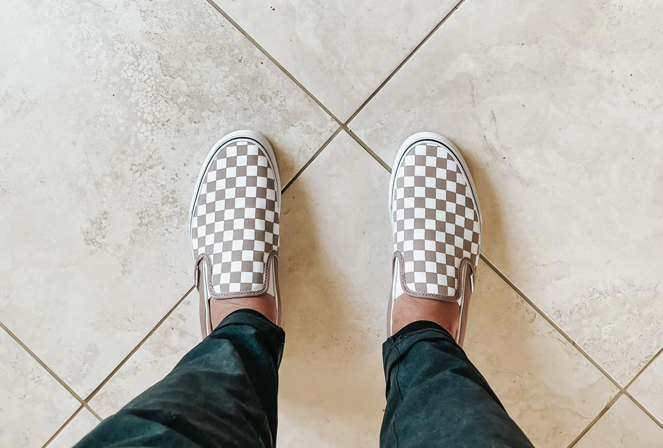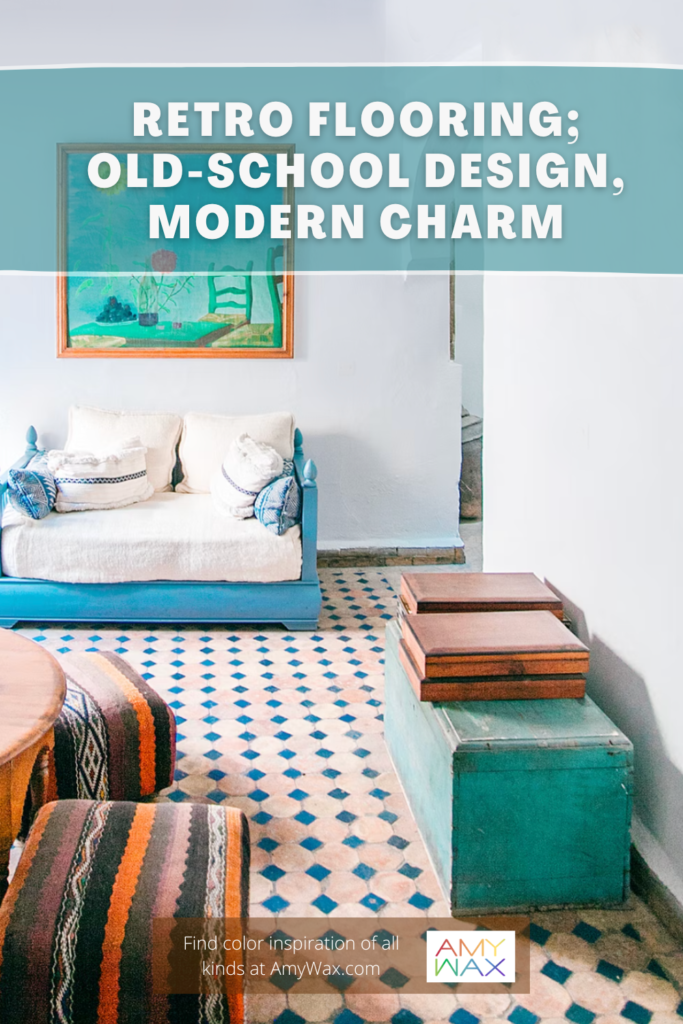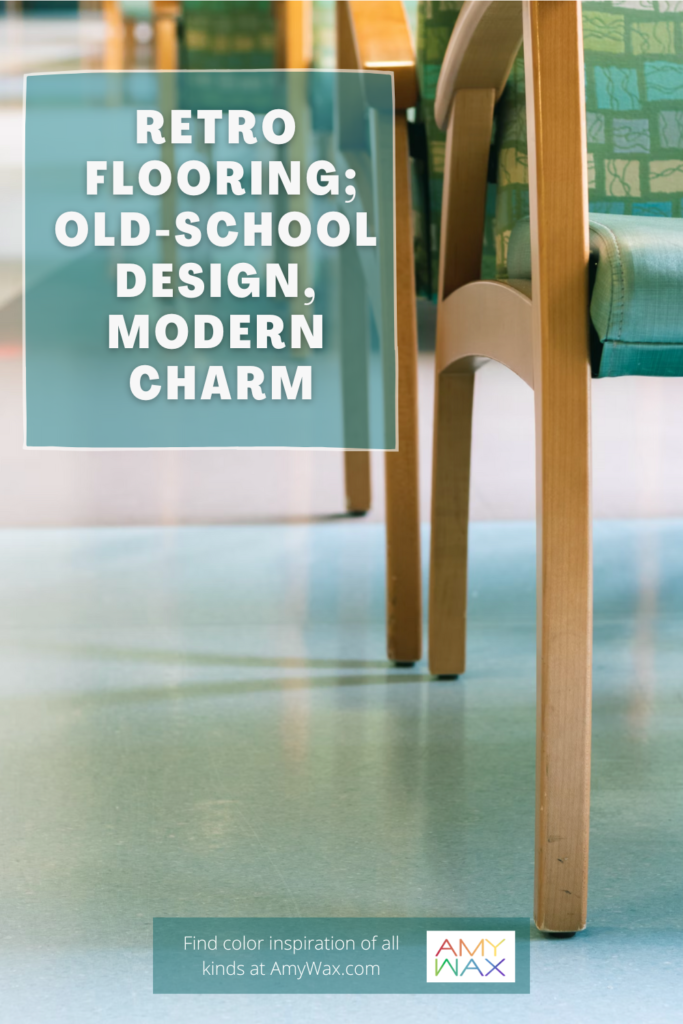Some design schemes and styles are timeless, while others are more of the moment and fleeting. But some design trends fall into the “grey area” of acceptance, and I’m referring to the retro styles that come back into the spotlight.
It’s almost guaranteed that certain interior design and fashion styles return to the spotlight after being dormant for 20 to 30 years or so, as if tastes are cyclical. A trend that I’ve seen come back into the spotlight after a long absence is retro flooring materials and design patterns. I thought it would be interesting to examine what is catching homeowners’ and designers’ interest regarding retro flooring.
Retro Flooring – What Defines It?
So, what exactly do we mean when we say “retro flooring”? Well, if we briefly revisit the piece I wrote on retro colors, I generally described them as “color palettes derived from/influenced by color trends from the 1920s through the 1980s.” Now retro flooring is a little more difficult to pin down, as it’s not just color palettes from different decades but is more focused on the flooring materials available from different eras and the patterns and color choices applied to those materials.
Hardwood, marble, and other naturally occurring flooring materials are timeless. These flooring types have existed in one form or another for thousands of years, so they’re not a part of the retro conversation. No, retro flooring, as far as what designers and homeowners are referring to today, really means linoleum.
What’s remarkable, though, is that some floors are original stone, and others are made to look like stone. These “lookalike” floors are indeed high-quality linoleum but with the elegance of a vintage tile floor!
Exterior Paint Colors Can Impact Your Home’s Curb Appeal!
Click to Learn More
Retro Flooring – A Lesson in Linoleum
Linoleum is undoubtedly having a moment right now. From hip coffee shops, boutique hotels, and gorgeous retro kitchens/bathrooms in private residences, linoleum has re-entered the public consciousness as a cool flooring option. I find this quite amusing, as linoleum has quite the long “love or hate” history with interior designers and homeowners, dating back to the mid-19th century.
Frederick Walton, a British inventor, discovered and patented linoleum in the 1850s. By the early 20th century, linoleum was the go-to flooring option amongst members of high society. Linoleum is simple in its composition, made of linseed oil, cork dust, pine resin, and pigments for color – it’s commonly overlaid on top of canvas or burlap for backing.
By the 1950s, linoleum was ubiquitous; you would see linoleum flooring everywhere, from school gyms to grandma’s kitchen. It was popular because of its resilience to heavy foot traffic, ease of packing and shipping (it can come in sheet rolls), and how manufacturers could easily come up with endless colors and patterns to sell to the public.
Why Is Linoleum Popular Today?
Linoleum has come back into the design spotlight for a few reasons. Firstly, linoleum is sustainable and environmentally friendly. Because linoleum is made from naturally occurring materials, it’s much easier to recycle, thus appealing to environmentally-conscious homeowners. Linoleum is anti-microbial and static resistant, so it will not get moldy or give your pets static shocks. Beyond the practicality of linoleum, as a designer and color specialist, I must believe linoleum is also coming back into the hearts and minds of homeowners because its got a great retro vibe and can be adjusted to fit many different design schemes!
Here are a few different ways to incorporate linoleum into the home:
- The kitchen
Quite possibly, the most ideal place for linoleum retro flooring is the kitchen. Now, you don’t have to choose a patterned linoleum floor like your great aunt had, with sunflowers and watermelons on it (even though no one would blame you); no, there are many more options to choose from today. I love the white and black checkered tile linoleum pattern, but pick a color that matches your kitchen’s color scheme instead of black! Checkerboards can be just as appealing in various earth tones, such as browns, grays, and taupes. The black and white checkerboard is classic for sure, but the other choices are fair game!
Picture a kitchen with dark navy blue cabinetry and stainless steel appliances. Imagine a clean linoleum floor underfoot, with a light blue and white tiled pattern. It adds a fun level of color dimension to the space!
- The bathroom
An area with heavy foot traffic and subject to a lot of water is great for linoleum flooring. There’s nothing to worry about as long as standing water is wiped up and doesn’t get under the linoleum to the subfloor. I love the look of a bathroom with light, mint green cabinetry and accent colors juxtaposed to a white stone patterned linoleum floor.
Retro Flooring – Is it For You?
While linoleum flooring with a funky retro vibe may not be for everyone, I find it charming that it’s coming back and finding new life with younger generations of homeowners who may have never experienced it in the first place. So, what do you think? Would you give retro linoleum flooring another chance? Or do you prefer to create memories with a whole new look for your family?
Please share your thoughts and memories; I always love hearing from you.






What an informative post, Amy. I didn’t realize how eco friendly REAL linoleum really is, not the vinyl lookalikes. Now, I know!
Thank you!
I’m so glad you enjoyed this post Leslie, I love digging a little deeper into what makes that products we love stand the test of time!
Such great info on linoleum, Amy! I had no idea of the history! I love to see truly good options like this being used again.